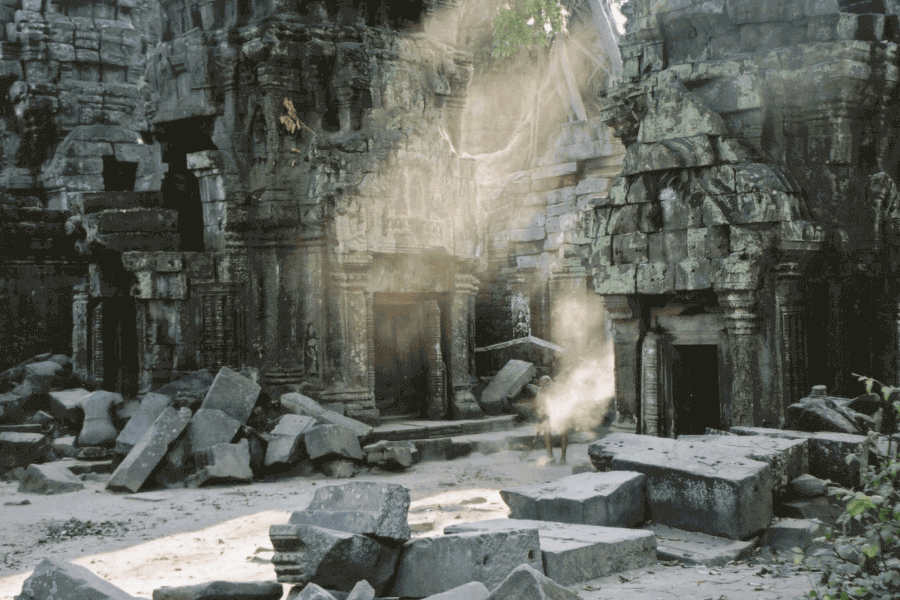Radiocarbon Dating - The Profile Of Nancy Athfield IELTS Reading Answers with Explanation
Luyện tập đề IELTS Reading Practice với passage Radiocarbon Dating - The Profile Of Nancy Athfield được lấy từ cuốn sách IELTS Actual Test 5 - Test 3 - Passage 1 với trải nghiệm thi IELTS trên máy và giải thích đáp án chi tiết bằng Linearthinking, kèm list từ vựng IELTS cần học trong bài đọc.
📖 Bài đọc (reading passage)
Radiocarbon Dating - The Profile of Nancy Athfield
Have you ever picked up a small stone off the ground and wondered how old it was? Chances are, that stone has been around many more years than your own lifetime. Many scientists share this curiosity about the age of inanimate objects like rocks, fossils and precious stones. Knowing how old an object is can provide valuable information about our prehistoric past. In most societies, human beings have kept track of history through writing. However, scientists are still curious about the world before writing, or even the world before humans. Studying the age of objects is our best way to piece together histories of our pre-historic past. One such method of finding the age of an object is called radiocarbon dating. This method can find the age of any object based on the kind of particles and atoms that are found inside of the object. Depending on what elements the object is composed of, radiocarbon can be a reliable way to find an object’s age. One famous specialist in this method is the researcher Nancy Athfield. Athfield studied the ancient remains found in the country of Cambodia. Many prehistoric remains were discovered by the local people of Cambodia. These objects were thought to belong to some of the original groups of humans that first came to the country of Cambodia. The remains had never been scientifically studied, so Nancy was greatly intrigued by the opportunity to use modern methods to discover the true age of these ancient objects.
Athfield had this unique opportunity because her team, comprised of scientists and filmmakers, were in Cambodia working on a documentary. The team was trying to discover evidence to prove a controversial claim in history: that Cambodia was the resting place for the famous royal family of Angkor. At that time, written records and historic accounts conflicted on the true resting place. Many people across the world disagreed over where the final resting place was. For the first time, Athfield and her team had a chance to use radiocarbon dating to find new evidence. They had a chance to solve the historic mystery that many had been arguing over for years.
Athfield and her team conducted radiocarbon dating of many of the ancient objects found in the historic site of Angkor Wat. Nancy found the history of Angkor went back to as early as 1620. According to historic records, the remains of the Angkor royal family were much younger than that, so this evidence cast a lot of doubt as to the status of the ancient remains. The research ultimately raised more questions. If the remains were not of the royal family, then whose remains were being kept in the ancient site? Athfield’s team left Cambodia with more questions unanswered. Since Athfield’s team studied the remains, new remains have been unearthed at the ancient site of Angkor Wat, so it is possible that these new remains could be the true remains of the royal family. Nancy wished to come back to continue her research one day.
In her early years, the career of Athfield was very unconventional. She didn’t start her career as a scientist. At the beginning, she would take any kind of job to pay her bills. Most of them were low-paying jobs or brief Community service opportunities. She worked often but didn’t know what path she would ultimately take. But eventually, her friend suggested that Athfield invest in getting a degree. The friend recommended that Athfield attend a nearby university. Though doubtful of her own qualifications, she applied and was eventually accepted by the school. It was there that she met Willard Libby, the inventor of radiocarbon dating. She took his class and soon had the opportunity to complete hands-on research. She soon realised that science was her passion. After graduation, she quickly found a job in a research institution.
After college, Athfield’s career in science blossomed. She eventually married, and her husband landed a job at the prestigious organisation GNN. Athfield joined her husband in the same organisation, and she became a lab manager in the institution. She earned her PhD in scientific research, and completed her studies on a kind of rat when it first appeared in New Zealand. There, she created original research and found many flaws in the methods being used in New Zealand laboratories. Her research showed that the subject’s diet led to the fault in the earlier research. She was seen as an expert by her peers in New Zealand, and her opinion and expertise were widely respected. She had come a long way from her old days of working odd jobs. It seemed that Athfield’s career was finally taking off.
But Athfield’s interest in scientific laboratories wasn’t her only interest. She didn’t settle down in New Zealand. Instead, she expanded her areas of expertise. Athfield eventually joined the field of Anthropology, the study of human societies, and became a well-qualified archaeologist. It was during her blossoming career as an archaeologist that Athfield became involved with the famous Cambodia project. Even as the filmmakers ran out of funding and left Cambodia, Athfield continued to stay and continue her research.
In 2003, the film was finished in uncertain conclusions, but Nancy continued her research on the ancient ruins of Angkor Wat. This research was not always easy. Her research was often delayed by lack of funding, and government paperwork. Despite her struggles, she committed to finishing her research. Finally, she made a breakthrough. Using radiocarbon dating, Athfield completed a database for the materials found in Cambodia. As a newcomer to Cambodia, she lacked a complete knowledge of Cambodian geology, which made this feat even more difficult. Through steady determination and ingenuity, Athfield finally completed the database. Though many did not believe she could finish, her research now remains an influential and tremendous contribution to geological sciences in Cambodia. In the future, radiocarbon dating continues to be a valuable research skill. Athfield will be remembered as one of the first to bring this scientific method to the study of the ancient ruins of Angkor Wat.
❓ Câu hỏi (questions)
Question 1 - 7
Do the following statements agree with the information given in the Reading Passage?
TRUE if the statement agrees with the information
FALSE if the statement contradicts the information
NOT GIVEN if it is impossible to say what the writer thinks about this
1
Nancy Athfield first discovered the ancient remains in Cambodia.
2
The remains found in the Cambodia was in good condition.
3
Nancy took some time off from her regular work to do research in Cambodia.
4
The Cambodia government asked Nancy to radiocarbon the remains.
5
The filmmakers aimed to find out how the Angkor was rebuilt.
6
Nancy initially doubted whether the royal family was hidden in Cambodia.
7
Nancy disproved the possibility that the remains belonged to the Angkor royal family.
Question 8 - 13
Complete the question below.
Choose ONE WORD ONLY from the passage for each answer.
The Career of Nancy Athfield
STEP 01
During her mid-teens, Nancy wasn’t expected to attend
8
STEP 02
Willard Billy later helped Nancy to find that she was interested in science.
STEP 03
Her PhD degree was researching when a kind of first went into New Zealand.
9
STEP 04
Her research showed that the subject’s accounted for the fault in the earlier research.
10
STEP 05
She was a professional before she went back to Cambodia in 2003.
11
STEP 06
When she returned Cambodia, the lack of was a barrier for her research.
12
STEP 07
Then she compiled the of the Cambodia radiocarbon dating of the ancients.
13
STEP 08
After that, the lack of a detailed map of the geology of Cambodia became a hindrance of her research.
🔥 Answer key (đáp án và giải thích)
1
FalseGiải thích chi tiết
 Step 1: Đọc câu hỏi
Step 1: Đọc câu hỏi
Nancy Athfield first discovered the ancient remains in Cambodia .
Main idea: Nancy discovered Cambodian ancient remains
(Nancy là người tìm ra các di vật cổ ở Campuchia)
--------------------------------


